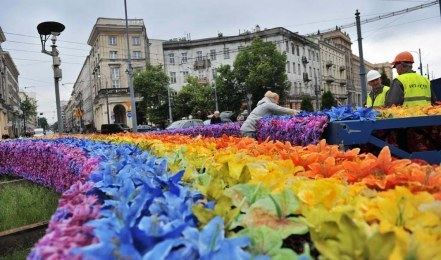Artist Julita Wójcik Architect Julita Wójcik | Opened 2012 | |
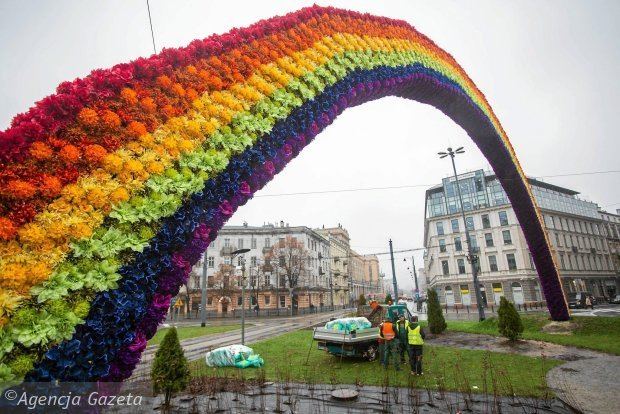 | ||
Nominations Polityka Passport Award for Visual Arts Similar Church of the Holiest Saviour, Zachęta, Ujazdów Castle, Chopin Statue - Warsaw, Palace of Culture and Scie | ||
Tęcza ([ˈtɛntʃa], meaning "rainbow") was an artistic construction in the form of a giant rainbow made of artificial flowers erected on the Savior Square (Plac Zbawiciela) in the Polish capital of Warsaw in the summer of 2012. It was maintained by the Adam Mickiewicz Institute. It was vandalized several times, generating significant media coverage in Polish media, usually in the context of LGBT rights in Poland. The construction was permanently removed in August 2015.
Contents
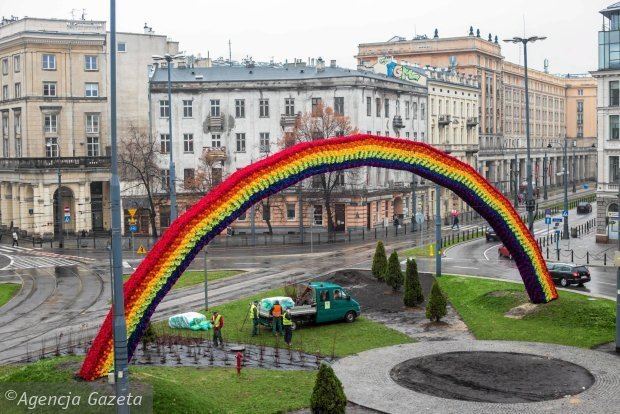
History
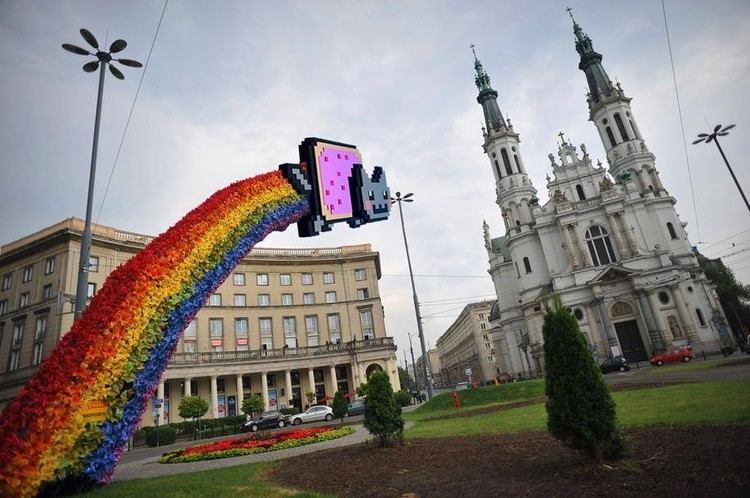
This installation was the third in a series of similar installations created; the second one was featured in front of the European Parliament in Brussels from 8 September 2011 during the Polish presidency of the European Union. The Warsaw Tęcza was based on the Brussels one, which was moved to Warsaw on 8 June 2012. For this project, Wójcik received the Paszport Polityki award. The installation was supposed to evoke positive feelings related to the rainbow, such as love, peace and hope, and was intended to be a universal, apolitical symbol. However, far-right nationalist and Catholic groups identified it with the rainbow flag, a symbol of the LGBT movement.
During the night of 26-27 August 2015, the construction was officially and permanently dismantled.
Vandalism and controversies
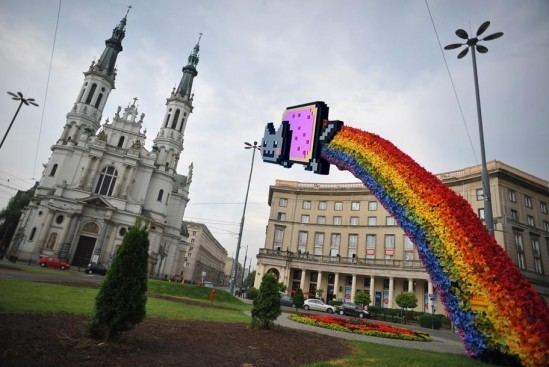
As the rainbow symbol is also associated with the LGBT movement, locating the Tęcza in the Savior Square in Warsaw proved controversial. The installation was damaged five times as of November 2013, with the usual method of vandalism being arson. The installation was damaged on 13 September 2012; on 1 January 2013 (ruled to be accidental fireworks damage) and again three days later on 4 January; in July 2013; and once again during marches on Polish Independence Day on 11 November 2013. The November 2013 incident occurred in the background of a wider riot by right-wing nationalists, who clashed with police and vandalized other parts of the city as well, also attacking the Russian embassy.
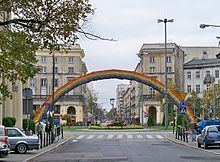
On 7 December 2014, the rainbow was set on fire by an unknown man just before 1:30 a.m. The flames were put out quickly by a police officer. The man who lit the fire was not apprehended.
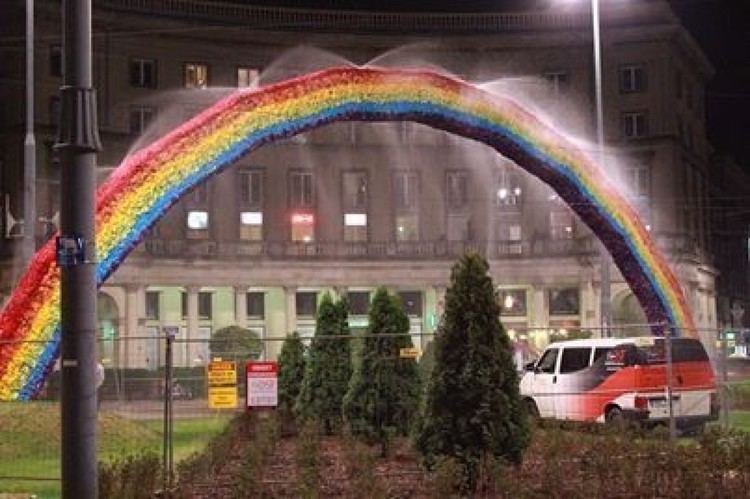
The installation was criticized by conservative and right-wing figures. Law and Justice politician Bartosz Kownacki derogatorily called the installation a "gay rainbow" (pedalska tęcza). Another Law and Justice politician, Stanisław Pięta, complained that the "hideous rainbow had hurt the feelings of believers" attending the nearby Church of the Holiest Saviour. Priest Tadeusz Rydzyk of Radio Maryja fame, described it as a "symbol of deviancy".
